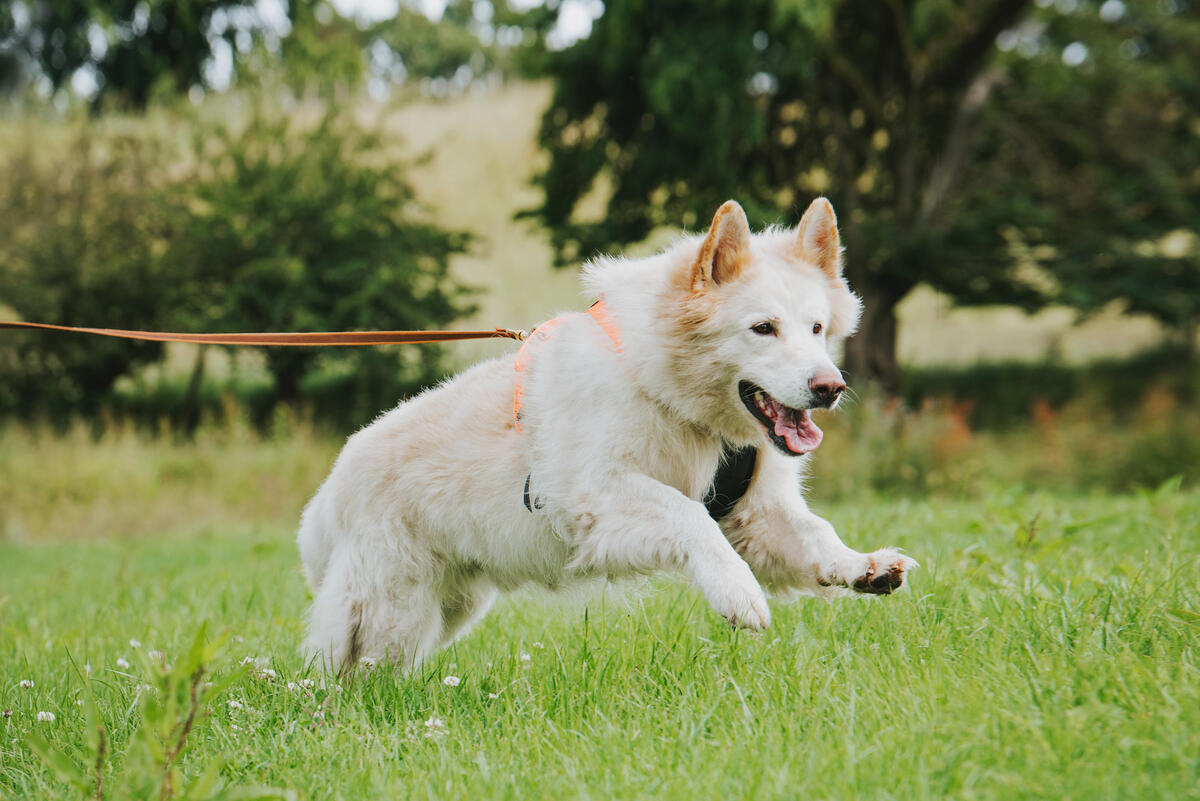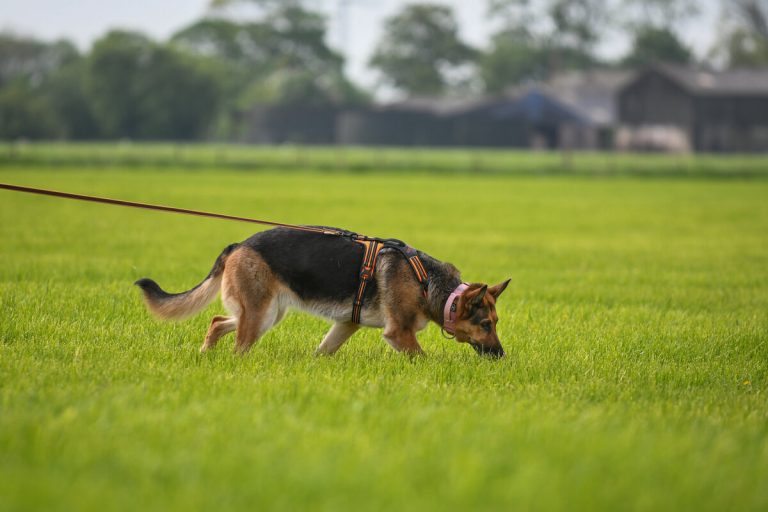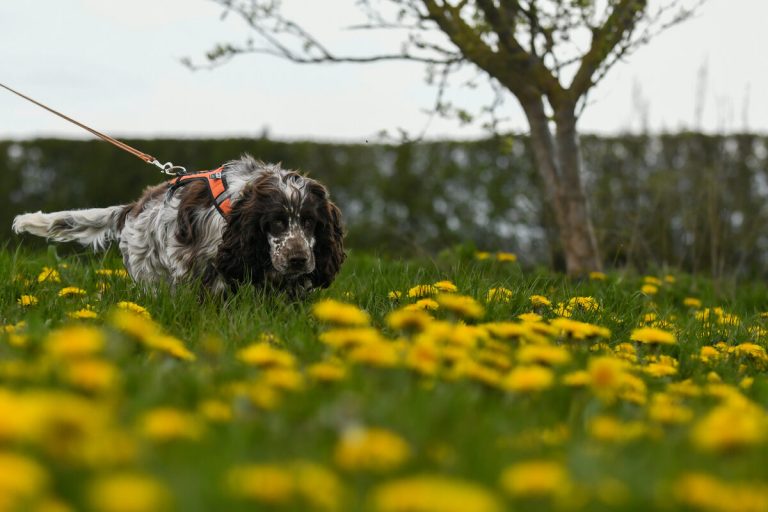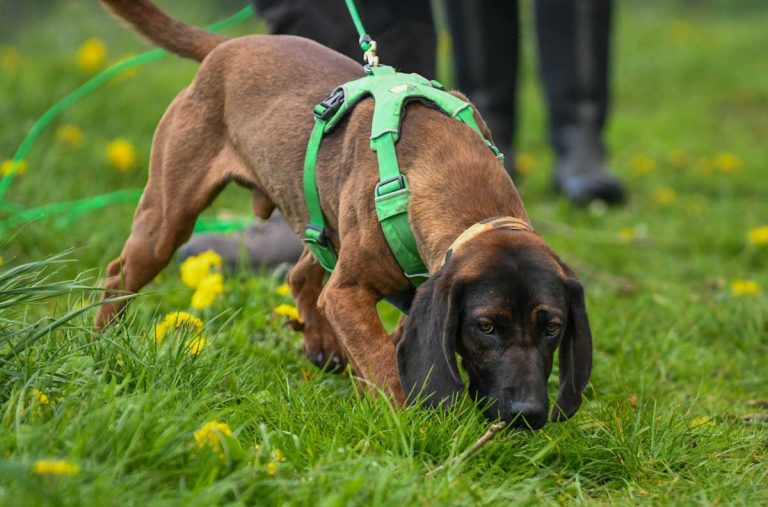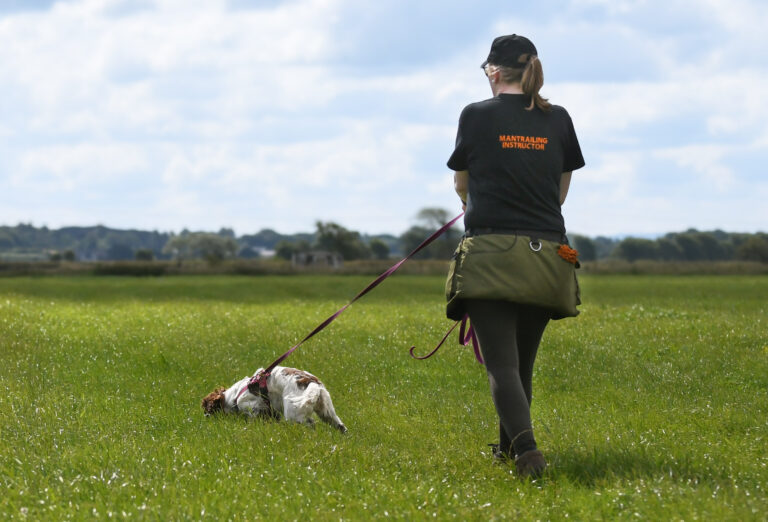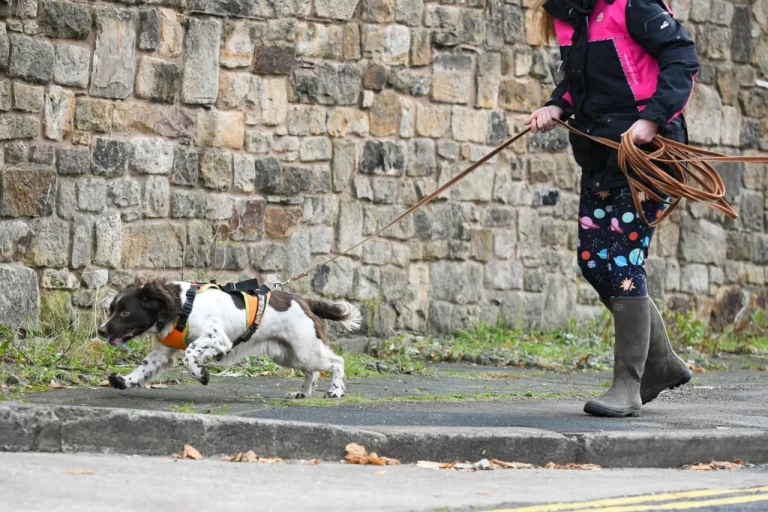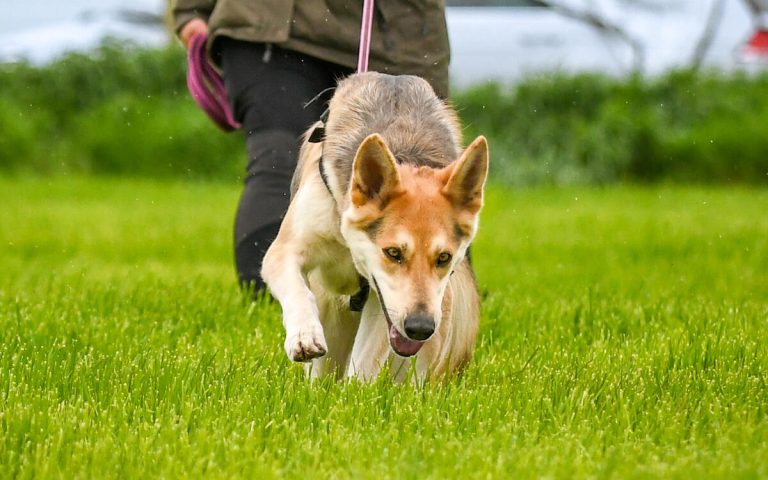Proximity, Hunting and Crittering in Mantrailing, What are They?
Mantrailing has lots of terms used in it to describe the dog’s behaviour when trailing. As handlers we are always seeking to be able to read our dogs’ behaviour on and off the trail.
Proximity, Hunting and Crittering can look very similar in the dogs behaviour and be hard to read when out on the trail.
The confusion between the three is not in their definition but the fact the behaviour can be the same for each one, because the dog is in the same emotional state. The state of searching for something be that the trail layer or an animal.
Proximity behaviour is where the dogs behaviour changes when encountering the scent pool of the trail layer.
This is usually observed as an increase in tension on the line, head carriage going up and the dog becoming more erratic to get to the reward of the trail layer.
Hunting in mantrailing is not for animals, but for the trail. A dog can be seen “hunting” for the trail when they stray far enough away from the trail scent that there isn’t enough to follow.
They then will hunt for the trail scent in order to get to their reward at the end with the trail layer.
This can be seen as an increase in movement of the head and tail, becoming almost erratic as well as an increase in pull similar to the proximity behaviour.
Crittering in mantrailing is where the dog has left the trail laid by a human and is now following the trail of an animal. They may leave the trail fully or in some cases multitask and follow both scents until they can determine which will bring the reward first.
This is seen as more energy movement in the body, head working closer to the ground or up in the air scanning the treeline, depending on which critter it is they are following. It can also have an increase of tension on the line similar to the proximity behaviour.
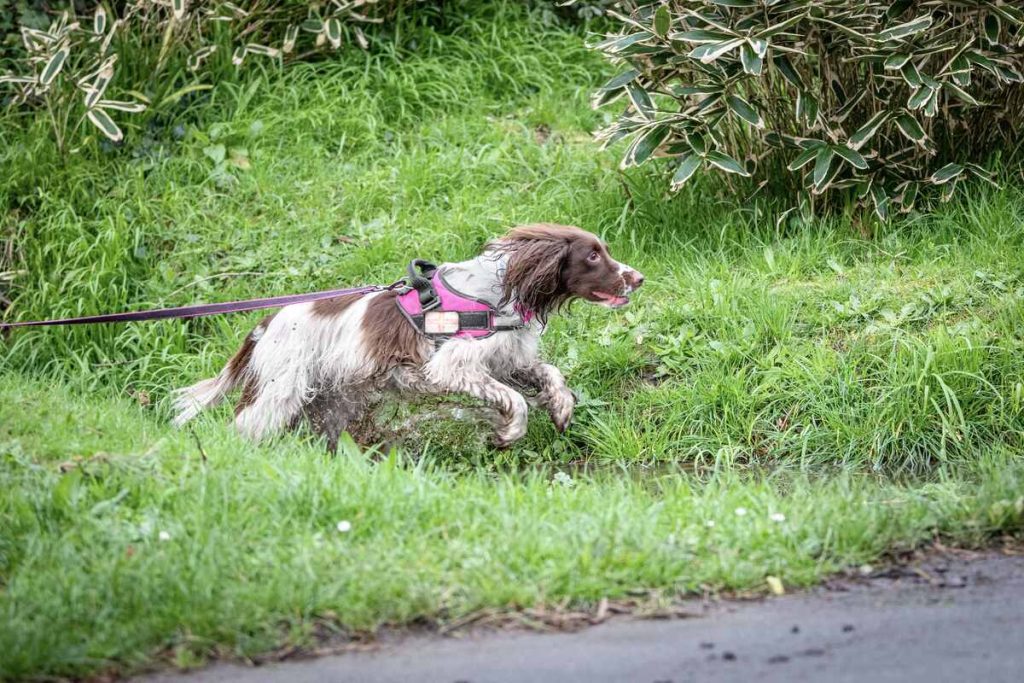
Why are we talking about the dogs’ behaviour on a trail?
The whole premise of mantrailing is to read the dog’s behaviour when on and off the trail.
We are reading how they are sorting human scent on the trail to find their person.
When their emotion changes we should be able to see that change and in their behaviour.
Mantrailing as a sport is about you and your dog building a better bond, as well as tiring the dog out just as much as agility or hoopers.
Knowing if your dog has lost the trail and is hunting for it compared to crittering will potentially change your handler response. The same goes for knowing if your dog is in proximity or hunting for the trail will dictate the success of the trail.
As handlers we want success as much as the dog, and helping them in the learning of the game is an integral part of the sport.
What is the difference?
There is always a difference in behaviour between hunting, crittering and proximity. You as the handler have to start to notice the subtle differences, which soon become obvious differences.
Every dog is individual and one of my most used phrases is “it depends on the dog” . Certain breeds work in a specific way, while some individual dogs do things in their own specific way.
This is an overview of the common responses and differences between the three thought processes.
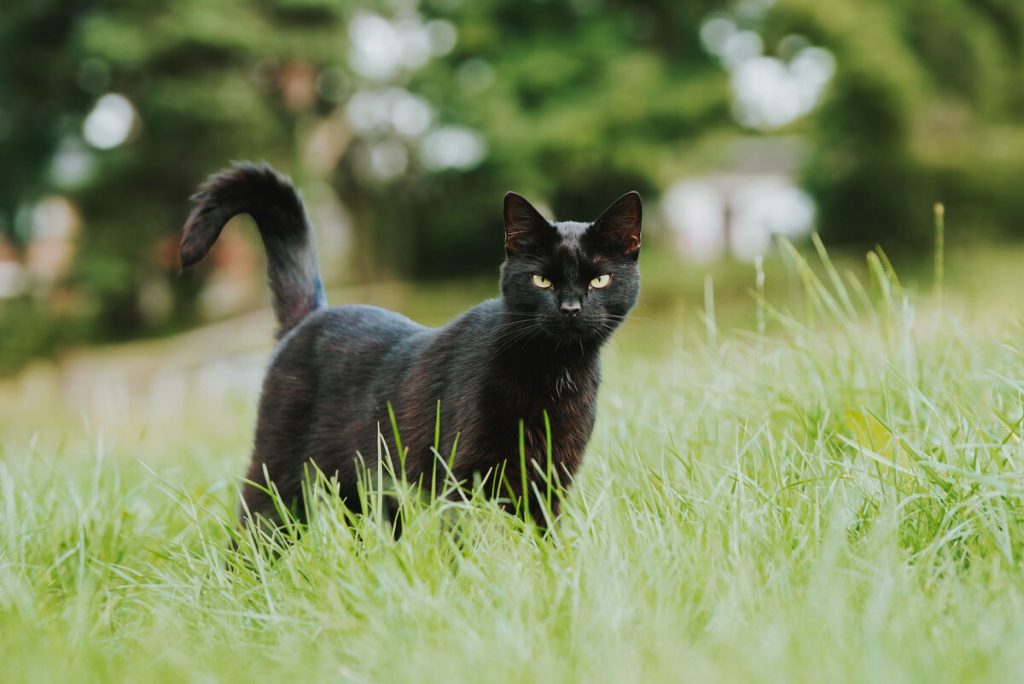
Crittering Behaviour:
Generally when a dog has switched to crittering for an animal, which can be a squirrel, rabbit or cat you get an increase in the buzz of the dog. By this I mean the dog can be seen to shake their whole body and stand stock still, in some breeds this becomes a point.
The sheer excitement of the animal increases the adrenaline in the dog’s brain, and they go into hunt mode getting ready to sprint at any moment towards the animal hidden in the undergrowth.
They become over aroused.
Others stand and stare at the trees, forgetting their trail layer and hoping a squirrel will jump from the trees into their jaws. They can always dream it will happen.
Knowing your dog and breed makes a huge difference when encountering animals. An example is the Spaniel will often dart about and become very buzzy when there is a bird about, they may not leave the trail and continue working forward but they are keeping half the brain on the trail and the other half on the bird, and then suddenly charge into a bush or down a track looking like they have made a very good decision to follow the trail layers scent, but when they have really switched fully to the birds scent.
Lots of people find this change hard to read, as the emotional state is the same. Keep working to find the reward at the end, sometimes cheese in a pot other times a bird if allowed to keep working that way.
Knowing the location of the trail, and working around areas with birds, cats, and any other animal your dog might find interest in is an important foundation learning in mantrailing.
To combat this you need to set up trails which work past the distractions and make sure the trail layer is the biggest reward going, changing up the food reward or even having a family member as a trail layer can be a big difference, but I find a toy reward is a great option for dogs who critter as they get to “kill” something at the end and play with the trail layer.
Building a higher value in the end of the trail, instead of the chance of hunting an animal on the trail.
But this is not the same for all dogs, other dogs may encounter the trail of another animal crossing the trail layers trail and suddenly stick their nose to the ground and hunt about for the exit trail of the animal, leaving the trail layers trail behind. It looks very intense and like the dog is really solving a problem, but it is deciding where it can find the cat!
This intense ground sniffing, followed by a strong pull or sudden stop can also indicate the dog has lost the trail and is now “hunting” for it.
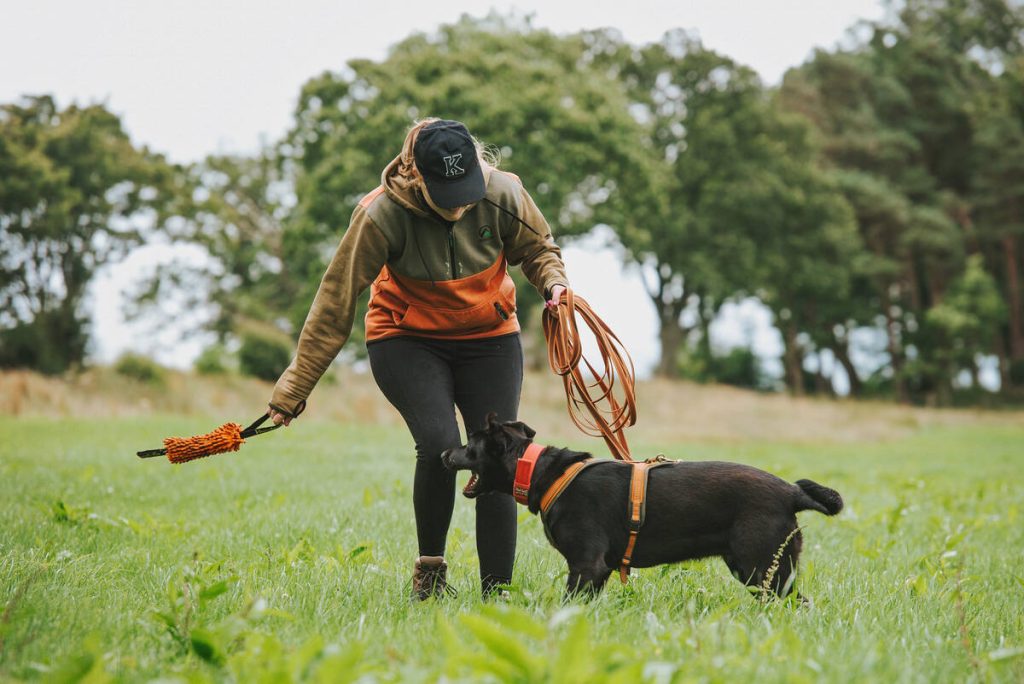
Hunting for the Trail:
Hunting for the trail is not the same as crittering, it is where the dog has lost the ground scent or enough concentration of air scent and is unable to follow the trail and is not hunting for it.
This can be similar to crittering and proximity as the dog often becomes more erratic with its ground scenting, or suddenly throws their head in the air concentrating on trying to find more air scent, depending on how the dog follows scent when mantrailing.
This sudden change in behaviour is often mistaken for proximity, due to the intense change.
The issue arises for the handler if the dog keeps working forward intensely, as it can look like they are following a trail but they are hunting for the trail. The handler can’t read the change and follows the dog, and then the dog takes the handler following as they are correct and keeps hunting for the scent.
It is a vicious cycle, and one that can only be broken by working known trails and seeing when the dog comes off the trail, and working out to find when the dog needs help from you as a handler or when to leave them work it out and make the choice to work back to the trail, rather then drive forward.
The change in behaviour is often larger head swings in both the air, and closer to the ground depending on the dog’s way of trailing. As well as an increase in the pull on the line to almost a drag, with potentially sudden stops along the trail to pee or sniff other things.
The intensity becomes displacement behaviour from the dog, who is no longer confident in their decision.
Displacement behaviour is seen in all walks of dog life, as it is when normal behaviour becomes out of context due to stress or conflicting emotion, the normal behaviour is no longer normal.
You will see male dogs suddenly start to need to pee, this is usually multiple times in a row. They may also start to sniff very closely on one thing and seem unusually focused on it, and almost be unable to be moved on. The dog can also start to jump at the handler or instructor looking for attention, but seemingly trying to communicate something. Usually “I’m Lost!”.
This change in behaviour can often be dismissed as messing about, when in fact it is communication to the handler there is no more trail to follow.
Another version of it is Ghosting, where the dog looks like it is trailing but it is not on the trail or any blown scent. But in ghosting there is no change in behaviour when the dog comes off the trail or switches to another scent. It is very hard to read, but doesn’t happen often in most dogs. It is often around stressful trails and the dog will continue to trail to keep from decision making.
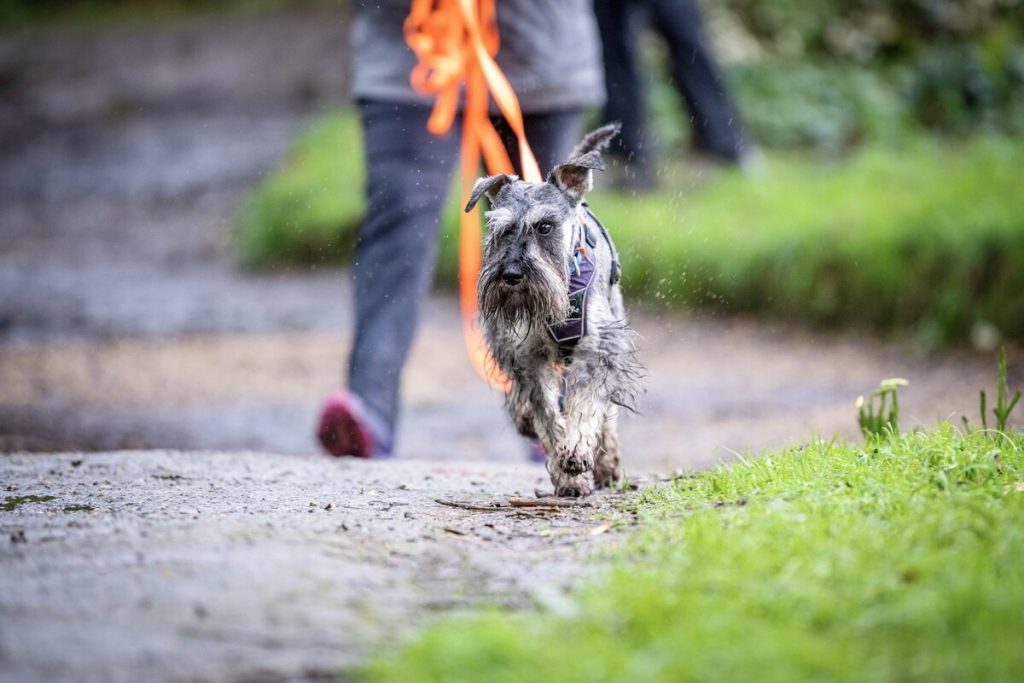
Proximity Behaviour:
Proximity is where the dog comes into the proximity of the trail layer and gets excited to get their reward.
The distance this behaviour can start, is dependant on the environment, wind and placement of the trail layer. The wind has the biggest effect by increasing the size or movement of the trail layers scent, also known as the scent pool, further away from where the trail layer is physically sitting.
The emotional response for many dogs is that of excitement, arousal and desperation. The dog wants to get to the reward so much they plough forward and often drag the handler towards where the scent is coming from which often gets them to the reward, the big issue in reading the dog in this case is when the wind has blown the scent far away from the trail layer, and the dog starts to follow wisps of scent and drag the handler around erratically.
Or the dog can hit the proximity of the trail layer, rush forward and actually lose the trail as the wind hos blown the scent pool from the trail layer in a different direction.
They may even start to just look around corners of buildings or head to known spaces the trail layer has been before. The dog becomes more erratic and then frustrated the reward isn’t coming fast enough.
It can be mistaken for crittering and hunting as the dog can become so focused on finding the person they are no longer listening to the handler, and may even vocalise in frustration.
The best way to combat this and build some clarity on when the dog is nearing the trail layer scent pool is to have the trail layer not hidden in the same places or always round the corner of a building, but instead have their scent covered with layers of clothing to dampen it and make sure they are not placed where the wind can pull the scent pool in different directions.
Working the dog with the wind coming from behind them also stops them air scenting the trail layer and rushing in.
Changing the reward to be with the handler can also reduce some urgency to get to the trail layer.
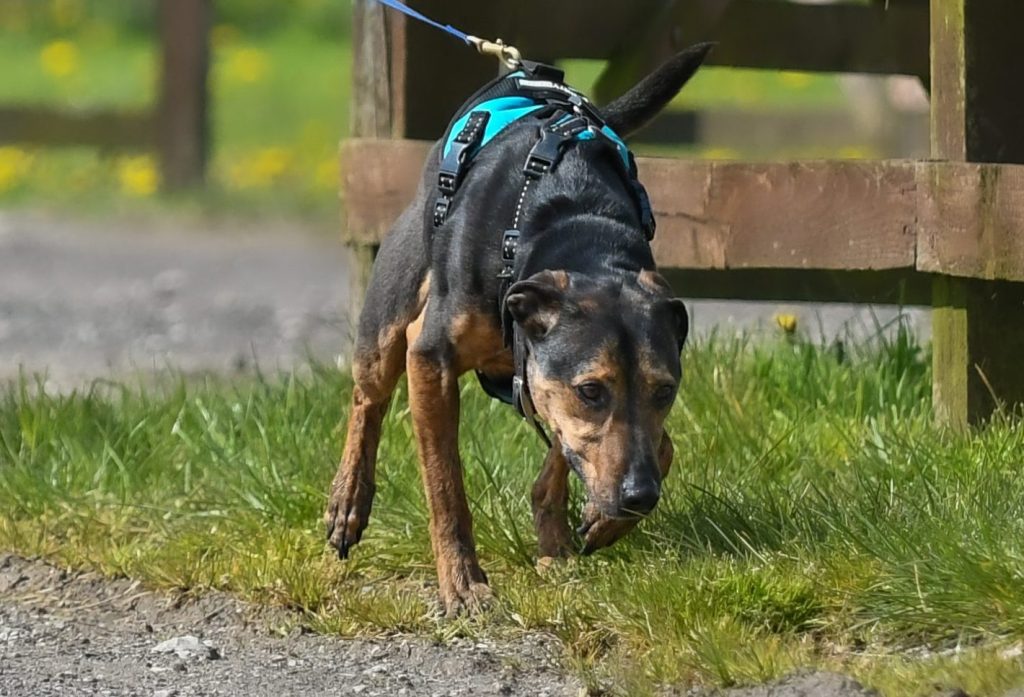
Conclusion
The behaviour your dog displays in different contexts on the trail is individual to them, but you can learn your dog through planning training scenarios which work on certain aspects of problem solving to be able to read the dog.
Setting up trails with the wind in the correct direction for the dog is important, as well as knowing how far the wind can potentially carry the scent in the context of that day.
Filming your trails is important to learn your dogs on and off the trail behaviour, you need to know when the dog has left the trail in order to know what your plan of action is.
Filming the trail can allow you to pinpoint exact behaviour change and notice patterns of behaviour.
I have talked about this subject with videos over on patreon. The videos are really useful to illustrate the information in the blog. You can check it out HERE
Learning you dogs behaviour is the goal of mantrailing, and your response or no response to crittering, hunting or proximity can only be confident if you have practiced and seen the same behaviour over and over to confirm that is what the dog is thinking when you see that behaviour.

